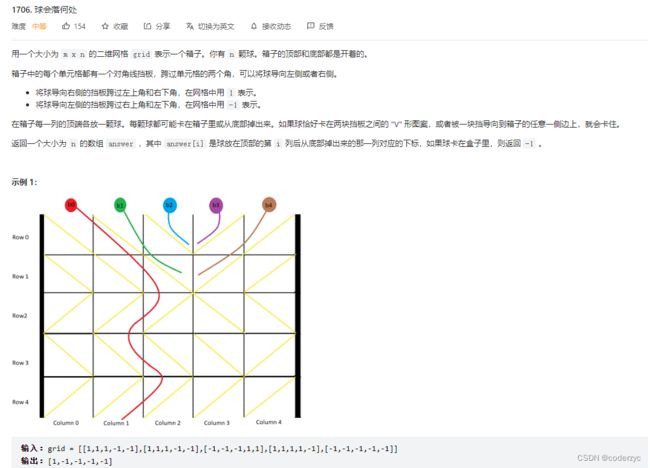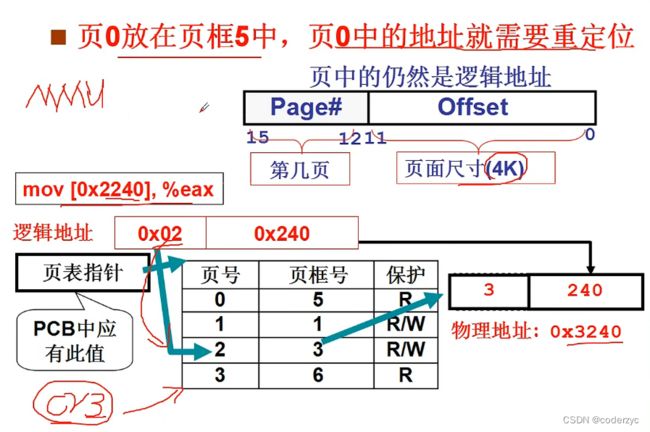记录:2022-9-19 螺旋矩阵 球会落何处 分页分区
学习时间:2022-9-19
学习内容
1、leetcode
54. 螺旋矩阵

这道题比想的要难做一些,主要方法有两种,一种是分层,一种是模拟,分层的思想,每次都走最外层,然后用top left right bottom记录,当top、bottom重合或left、right重合时,说明当前已经走到最后,否则top,left++,right\bottom–.
代码如下:
class Solution {
public List<Integer> spiralOrder(int[][] matrix) {
List<Integer> order = new ArrayList<Integer>();
if (matrix == null || matrix.length == 0 || matrix[0].length == 0) {
return order;
}
int rows = matrix.length, columns = matrix[0].length;
int left = 0, right = columns - 1, top = 0, bottom = rows - 1;
while (left <= right && top <= bottom) {
for (int column = left; column <= right; column++) {
order.add(matrix[top][column]);
}
for (int row = top + 1; row <= bottom; row++) {
order.add(matrix[row][right]);
}
if (left < right && top < bottom) {
for (int column = right - 1; column > left; column--) {
order.add(matrix[bottom][column]);
}
for (int row = bottom; row > top; row--) {
order.add(matrix[row][left]);
}
}
left++;
right--;
top++;
bottom--;
}
return order;
}
}
第二种解法是模拟,模拟这种移动方式,不停遍历,这种比较难写 没有写出来
这种解法需要用的visited数组,判断是否已经走过,如果走过 需要换方向
我死在了这个方向上,我构建的是一维数组,这个题解构建的二维数组,构建二维数组是因为方向是两个位置,我没有想到这一点,非常可惜
class Solution {
public List<Integer> spiralOrder(int[][] matrix) {
List<Integer> order = new ArrayList<Integer>();
if (matrix == null || matrix.length == 0 || matrix[0].length == 0) {
return order;
}
int rows = matrix.length, columns = matrix[0].length;
boolean[][] visited = new boolean[rows][columns];
int total = rows * columns;
int row = 0, column = 0;
int[][] directions = {{0, 1}, {1, 0}, {0, -1}, {-1, 0}};
int directionIndex = 0;
for (int i = 0; i < total; i++) {
order.add(matrix[row][column]);
visited[row][column] = true;
int nextRow = row + directions[directionIndex][0], nextColumn = column + directions[directionIndex][1];
if (nextRow < 0 || nextRow >= rows || nextColumn < 0 || nextColumn >= columns || visited[nextRow][nextColumn]) {
directionIndex = (directionIndex + 1) % 4;
}
row += directions[directionIndex][0];
column += directions[directionIndex][1];
}
return order;
}
}
作者:LeetCode-Solution
链接:https://leetcode.cn/problems/spiral-matrix/solution/luo-xuan-ju-zhen-by-leetcode-solution/
来源:力扣(LeetCode)
著作权归作者所有。商业转载请联系作者获得授权,非商业转载请注明出处。
时间复杂度:O(mn)O(mn),其中 mm 和 nn 分别是输入矩阵的行数和列数。矩阵中的每个元素都要被访问一次。
空间复杂度:O(mn)O(mn)。需要创建一个大小为 m \times nm×n 的矩阵 \textit{visited}visited 记录每个位置是否被访问过。
1706. 球会落何处

这道题其实属于一道找规律题,只要找到规律了就很好做
规律为:
碰到墙壁或者组成v,则说明无法到下面,否则一直执行,直到出去
如何才能不组成V呢,只需要x和他的下一位方向相同,就一定不会组成V,否则就会出现V
我没有用动态规划做这个题,但实际上也可以用dp,dp的每一位存储的j位置能到的column列
class Solution {
public int[] findBall(int[][] grid) {
int row = grid.length;
int col = grid[0].length;
int[] ans = new int[col];
for(int i = 0;i<col;i++){
int result = 1;
//从i开始的球,是否可以放入
//1 是否可以走下一步 若可以 标明下一步方向
int x = i;
for(int j = 0;j<row;j++){
int nowdir = grid[j][x];
//判断是否会碰壁
if(x==0 && nowdir == -1){
result = -1;
break;
}
if(x==col-1 && nowdir == 1){
result = -1;
break;
}
//是否组成V
if(nowdir != grid[j][x+nowdir]){
result = -1;
break;
}
x = x+nowdir;
}
if(result == 1){
//看他掉在哪
ans[i] = x;
}else{
ans[i] = -1;
}
}
return ans;
}
}
2、分页 分区
重新巩固分页和分区的概念
首先,为什么有分区?分区的意义是:需要给内存找到一个空闲的位置,然后通过文件系统将程序加载到这个空闲的位置,分区有两种,一种是可变分区,一种是固定分区,固定分区分配很容易出现不合理的情况(实现简单,只需要极少的操作系统开销),一般使用可变分区进行动态分配,可变分区有最佳分配 最先分配 最差分配 三种情况,现在从不同维度考虑这些分区方式的好坏
最佳分配
思路是找到最适合当前request内存的最小的内存空间
优点:当需要一个特别大的块时,这种分配方式可以拿出来
缺点:外部碎片多且小,不好解决
最先分配
分配找到的第一个大于request内存的空间
优点:特别快 O(1),均匀分配
缺点:这种分配会使得内存的低地址部分出现很多小的空闲分区,而每次分配查找时,都要经过这些分区,因此也增加了查找的开销
一般来说,这个算法是最好的
最差分配
查询所有内存空间中的最大块,并拿来分配
但是却把最大的连续内存划分开,会很快导致没有可用的大的内存块,因此性能也非常差
解决外部碎片的方法有合并紧缩,这种方式会导致死机现象的产生,所以性能消耗较大
由于上述这些分配方式并不能解决外部碎片的问题,所以需要引出分页的概念
分页让每次分配的内存按页为单位读入,这样不会产生外部碎片,只会产生内部碎片,而且每次的内部碎片不多,最大消耗为一个页的大小
下图为一个从指令读取到物理地址的过程:

首先,输入mov [0x2240],%eax
这个地址的2240,由于每个页面4K(212 = 右移三位 因为一个数字类型占四位),所以对应2240可以右移三位,2240>>3= 2,拆分为2 与 240,240为offset,在页号为2的位置,从PCB中找到页表,然后找到页框号为3的位置,并偏移240,得到物理地址0x3240,就实现了映射关系
